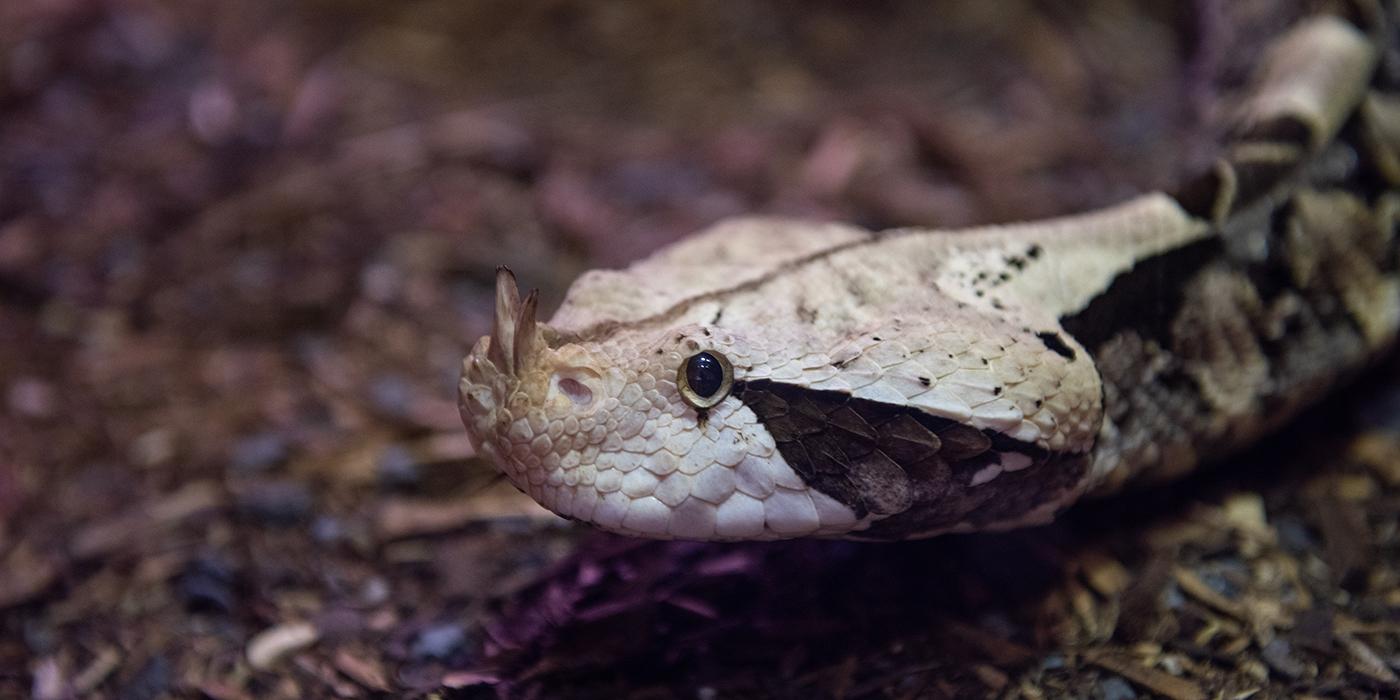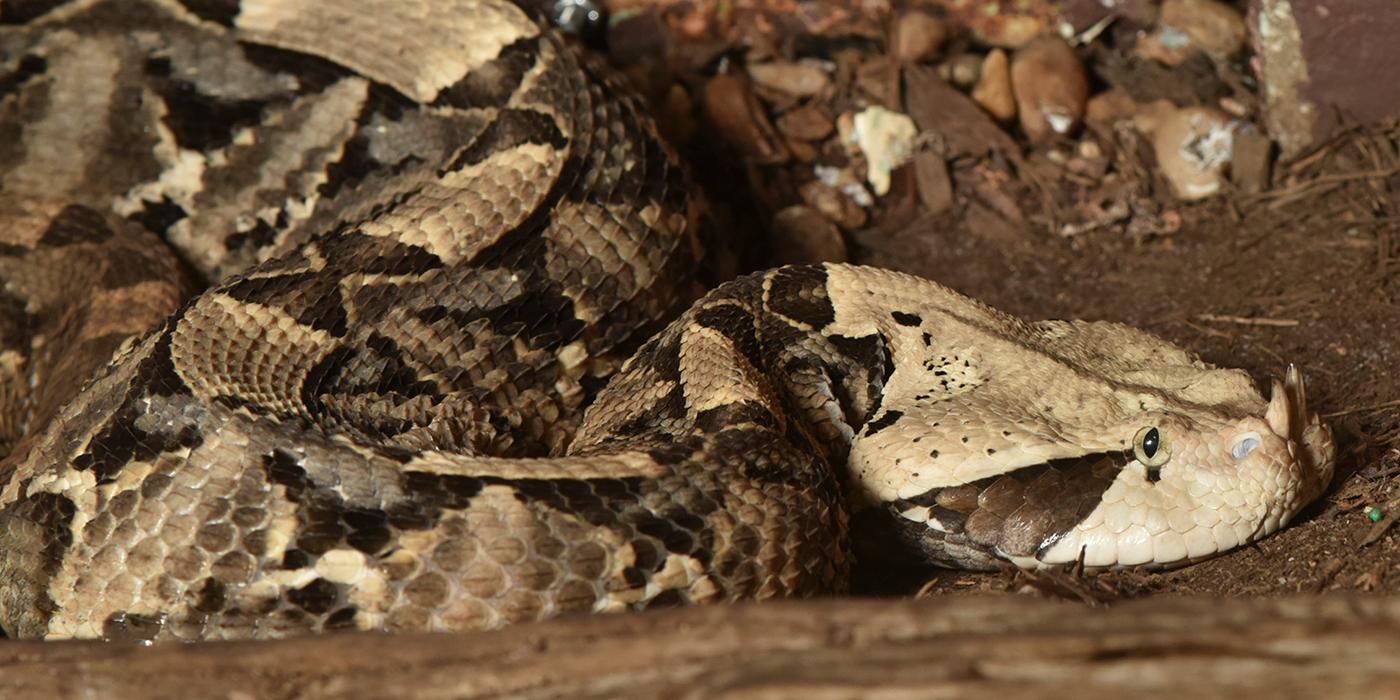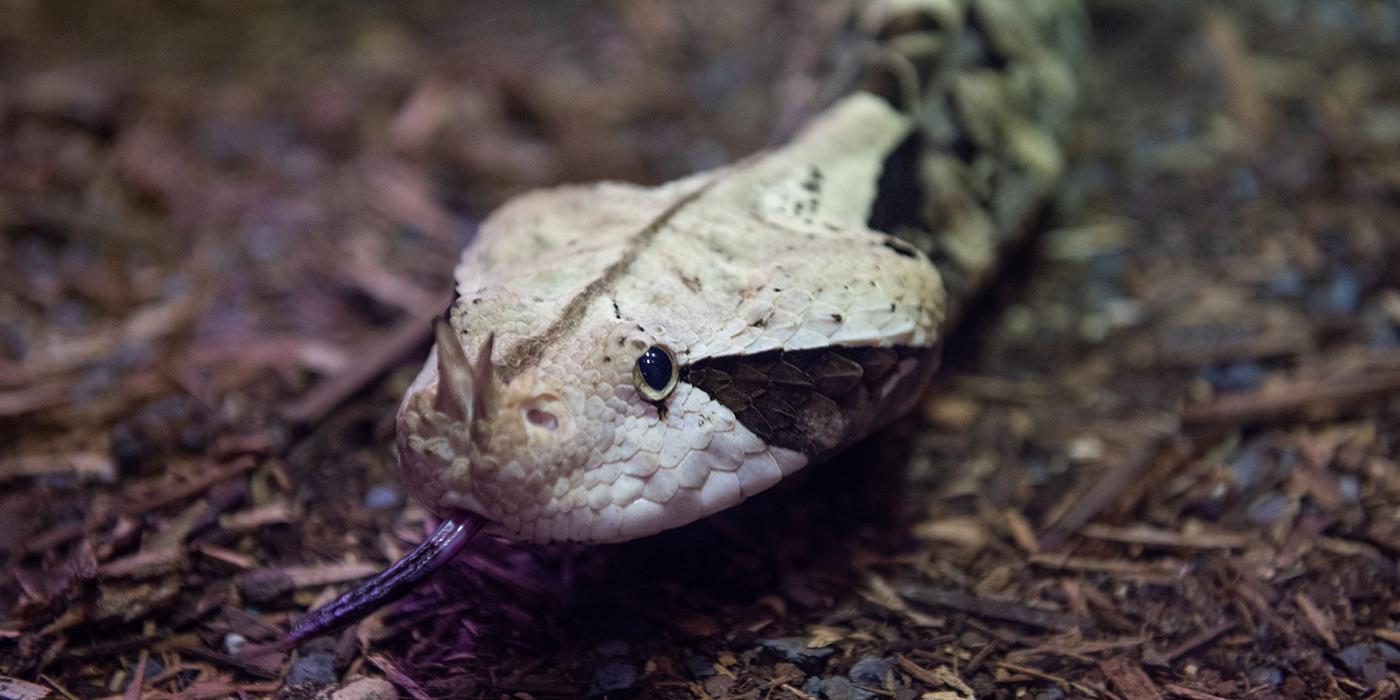The Gaboon viper is the largest viper in Africa. Its coloration and broad head, which mimics a fallen leaf, camouflages it among leaf litter on the forest floor. Though venomous, this snake has a calm nature and rarely bites humans.
Physical Description
The Gaboon vipers' coloration is a combination of light and dark brown, pink and purple arranged in diamonds and stripes along its back. Light and dark lines radiate from around its small eyes.
It has a short tail, and its broad head mimics a fallen leaf, right down to the central vein. This striking pattern is excellent camouflage in the snake's native habitat, helping it blend into the leaf litter on the forest floor.
Size
Gaboon vipers are the largest vipers in Africa, weighing more than 45 pounds (20 kilograms) and reaching lengths of more than 6 feet (1.8 meters). The largest individuals have heads nearly 6 inches (15 centimeters) across at their widest point.
Native Habitat
These vipers live in rainforests and wet areas in parts of Central, East and West Africa. They are terrestrial and can be found on the forest floor.
Lifespan
Gaboon vipers live for about 20 years.
Food/Eating Habits
They eat small and medium-sized mammals and birds. Gaboon vipers are passive hunters, waiting concealed to strike at whatever small creatures pass within range. Most snakes strike and release, but this viper holds on until its prey dies.
Gaboon vipers have a placid nature and very rarely bite humans. Most bites occur when the snake is stepped on before it has an opportunity to get away. If harassed, it will raise the upper part of its body and hiss in threat before actually striking.
In addition to its unwillingness to bite, the viper can control whether it injects venom and how much, so the result of a strike can range from no effect to rapid death. A hungry snake will strike at almost any sideways movement, so some bites might well be a result of mistaken identity.
At the Smithsonian's National Zoo, Gaboon vipers eat mice and rats.
Reproduction and Development
Females can have 50 to 60 babies at a time. The young are born live.
Conservation Efforts
Gaboon vipers help control the rodent population in the rainforest and may be threatened locally by habitat loss.
Help this Species
- If you see a snake in the wild, leave it alone and encourage others to do the same. Don’t assume it is a venomous species, and don’t attack it if it doesn’t pose a threat to your safety. Tell your friends and family about the eco-services that snakes provide, such as keeping rodent populations in check.






